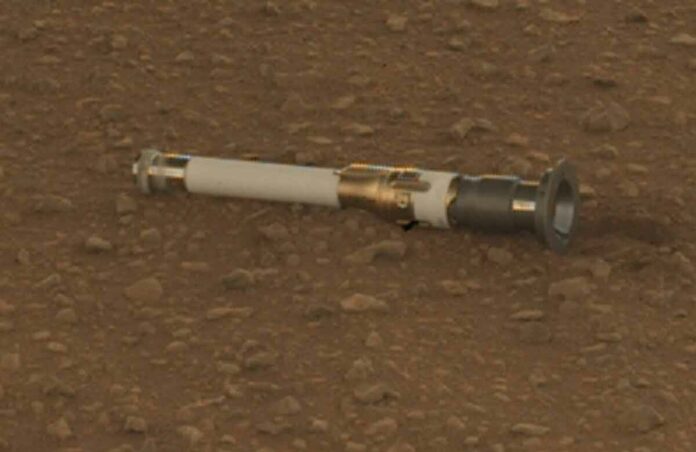A titanium tube containing a rock sample is resting on Mars’ surface. It has been dropped there by NASA’s Perseverance Mars rover on December 21. Over the next two months, the rover will deposit a total of ten tubes at the “Three Forks” location. It will establish humanity’s first sample depot on another planet. The establishment of the depot is a historic first step in the Mars Sample Return campaign.
Perseverance has been collecting duplicate samples from the mission’s chosen rock targets. The rover currently has the remaining 17 samples (including one atmospheric sample) in its belly. The rover would deliver samples to a future robotic lander based on the architecture of the Mars Sample Return campaign.
The lander would use a robotic arm to place the samples in a containment capsule aboard a small rocket. It would blast off to Mars orbit. There, another spacecraft would capture the sample container and safely return it to Earth.
If Perseverance is unable to deliver its samples, the depot will serve as a backup. A pair of Sample Recovery Helicopters would be dispatched to complete the task.
The first sample to fall was a chalk-size core of igneous rock dubbed “Malay” and collected on Jan. 31, 2022. It will fall in a region of Mars’ Jezero Crater known as “South Sétah.” It took an hour for Perseverance’s complex Sampling and Caching System to retrieve the metal tube from inside the rover. The rover viewed it one last time with its internal CacheCam. Then it dropped the sample roughly 3 feet onto a carefully selected patch of Martian surface.
Engineers at NASA’s Jet Propulsion Laboratory in Southern California were not finished with this. After confirming that the tube had fallen, the team used the WATSON camera at the end of Perseverance’s 7-foot-long robotic arm to peer beneath the rover to ensure that it hadn’t rolled into the path of the rover’s wheels.
They also wanted to make sure the tube hadn’t landed so that it was standing on its end. Each tube has a flat end piece called a “glove”. This makes it easier to be picked up by future missions. During testing with Perseverance’s Earthly twin in JPL’s Mars Yard, this happened less than 5% of the time. If this occurs on Mars, the mission has programmed Perseverance to carefully knock the tube over with a portion of the turret at the end of its robotic arm.
They’ll have more chances to see if Perseverance needs to use the technique in the coming weeks as the rover deposits more samples at the Three Forks cache.

